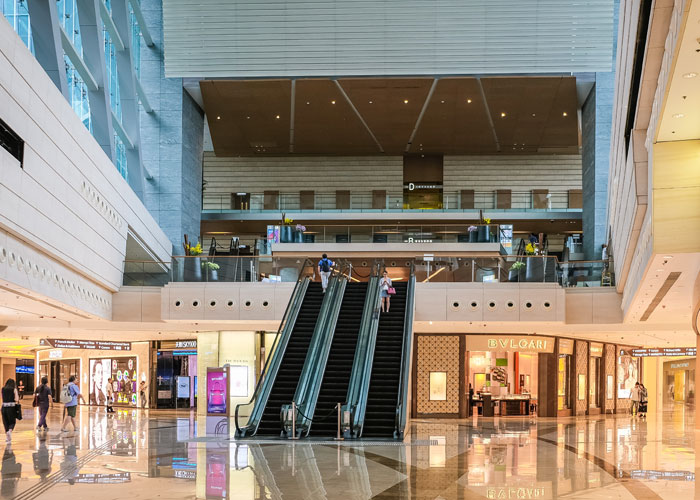Few sectors of the U.S. economy have been as deeply impacted by the coronavirus pandemic as commercial real estate.
From restaurants and hotels to offices, gyms and malls, COVID-19 has pinned the industry into a corner — and it’s not yet clear whether the worst has arrived.
For months, lenders have shown forbearance to building owners across the country who have fallen behind on payments. About $430 billion in commercial and multifamily real estate debt will mature in 2021, setting up a year of reckoning as market values are reset, Bloomberg reported earlier in December.
And though the arrival of COVID-19 vaccines is a beacon of hope on the path to recovery, their broad effect on these struggling parts of the economy likely will be delayed. From Bloomberg:
Projections from real estate services firm CBRE Group Inc. suggest that property values for apartments, offices and retail real estate won’t find their bottom until the middle of next year. Worse, the rebound to pre-Covid levels could take until 2022 or beyond.
Bloomberg
Only industrial real estate has shown signs of growth, as warehouses and logistics facilities gain value on the strength of e-commerce (which threatens brick-and-mortar retail) and the need for storage of pandemic-related goods and essential supplies.
Calvin Schnure, a senior economist at Nareit’s, agreed with Bloomberg’s forecast for commercial real estate next year.
“The issue with commercial real estate is it could actually continue to worsen through the first half of the year and even into the second half of the year, because things like vacancy rates and rents tend to be lagging indicators,” Schnure said in a recent interview with Yahoo! Finance. “So we’re likely to see a tough slog in the first half of the year, but a better market in the second half of next year.”
On a more granular level, Marc Joffe of the National Review looked at the role of credit-rating agencies and the muddying effect they may have on commercial real estate moving into the next phase of the pandemic. This influence is not as readily apparent as it was during the 2008 recession:
These problems have flown under the radar in 2020 because the recession was caused by the pandemic rather than by financial engineering gone awry. Also, aggressive fiscal and monetary policies have limited the number of large, institutional defaults we have seen thus far. If highly rated yet insolvent firms continue to service their debts with the help of the government, regulators can overlook the accuracy of their ratings. . . . Indeed, high ratings may even be seen as reflecting the possibility that government will come to the rescue of a distressed borrower.
Marc Joffee, National Review
Among Single Asset/Single Borrower Commercial Backed Mortgage Securities (SASB CBMS), the level of concern may be even greater because they have not received federal support. Their underlying mortgages are typically liens on the very properties that are underperforming as a result of the pandemic: office buildings, hotels and shopping malls.
“While the Fed recognized the heightened risk of SASB CMBS deals, rating agencies awarded AAA ratings to hundreds of senior CMBS securities with poorly diversified collateral pools prior to the coronavirus recession,” Joffe wrote.
Though SASB CMBS deals are not an especially large asset class, the way they had been overrated and their underperformance in the ensuing pandemic points not only to the risk these assets now entail, but a large set of issues with ratings failures as the long-term recovery unfolds.
Looking ahead to next year, Forbes anticipates the incoming Biden administration will be keen to provide more direct federal support to individuals and businesses that in turn help commercial landlords meet their own financial and tax obligations:
The Biden administration may carve out direct stimulus payouts for each state. This would mean that there could be a federal bailout for the states and their respective deficits. If a state had a budget deficit of $200 million, then the federal government could provide either a portion of that $200 million or the entire sum, which would act as a backstop from the federal government. As a result, the state would not need to lean on the commercial real estate owner to fill the gap. This could allow commercial real estate owners to become more flexible with their tenants and ease some burden as the pandemic lingers.
Matthew Holden, Forbes Councils Member
Whatever mixture of government policy and market adaptation take place, the recovery for commercial real estate will likely be uneven. There will be those who hurt more than others.
“Retail will remain just a mess, hospitality will have a very challenging year, and, in more isolated instances, office will be problematic,” Dave Bragg, a managing director at real estate research firm Green Street, told Bloomberg.
The nightmare of 2020 will not end on account of the Gregorian calendar. Most economists seem to agree that the first half of 2021 is going to be a difficult stretch for commercial real estate.
But if there is one advantage to the first half of next year, it’s that it will help provide a more realistic assessment of the damage caused by the pandemic. 2021 will remove some of the guesswork and point commercial real estate toward its necessary steps to recovery.
Photo Credit: Magda Ehlers/Pexels.com



676 Comment
Comments are closed.